Introduction
United Arab Emirates’ natural environment is characterized by animals, which have adapted to harsh climatic conditions like insufficient water in the country. When people think of this environment, it is possible to visualize the life of these animals with regard to their survival techniques in a habitat that is full of natural challenges. Despite the fact that the country is covered with a large desert, its water is home to numerous species of animals, distinct from those found on the mainland (UAE Interact 2012). This report analyses the marine life in the UAE, covering detailed information about the various species of animals found in the region and their adaptation to the unique environment. To achieve this task, the report is divided into segments, including but not limited a summary, detailed analysis and conclusion.
Summary
UAE enjoys rare treasure originating from the Oman Gulf. This attracts diverse, especially in the Musandam region, extending to the Straits of Hormuz. Despite the fact that the country has a rich marine, only a few people who reside along the UAE’s coastline get to experience the value and beauty of sea life naturally. However, the majority of people enjoy seal life through meals prepared from sea animals. It is worth noting that marine life in UAE has continued to suffer and experience a myriad of challenges emanating from human activities (Marine Life of the UAE 1999).
Since most people in the country do not interact with sea animals in their natural habitats, there is poor management and care given to these helpless animals. For instance, pollution of water and careless dumping leave UAE water unfit for marine life. Additionally, overfishing and continuous dependence on these resources have stretched marine ecosystems beyond their ability to support human life (George & John 2005).
It is equally important to mention that divers and environmentalists have played a major role in saving the UAE’s marine life. Having highlighted the danger facing sea life in the country, the government has moved to protect the marine environment from human encroachment, pollution and exploitation (Marine Life of the UAE 1999). In addition, sharks have remained a major threat to sea life in the Gulf and in other parts of the world, posing the greatest fear to man. Besides its adaptive features and beauty, hunting threatens the existence of this species.
Due to the fear and the gap between man and sharks, tones of sharks are shipped to the Far East from Fujairah. It is estimated that a single businessman in Sharjah is able to ship several tones in a year with most of the sharks being obtained from UAE’s water. Apart from sharks, UAE water is home to reptiles, fish and several sea animals. The following segments of the report cover different marine animals found in the UAE (Marine Life of the UAE 1999).
Fish
Pelagic Fish
The distribution of this type of fish is influenced by the Straits of Hormuz’s heavy currents. For example, smaller fish like tuna are common in the Arabian Gulf, whereas larger ones weighing up to 65 kilograms are found towards the eastern side of the UAE. Additionally, coastal water of UAE is home to striped marlin, extending to the Fujairah coastline (George & John 2005).
Demersal Fish
Rays, sharks and cartilaginous fish are found close to the surface and over sand, near offshore structures, which include rocky outcrops and reefs. These structures hold small fishes upon which they feed. They also prey on crustaceans, found deep in water (King 2008, p. 18). On the other hand, sharms and khors attract numerous mud and sand-dwelling species of fish. It is worth noting that coral reefs attract the largest number of bony fish compared to many other species. It is believed that large sawfish were quite common at Sharjah before the dredging became deeper.
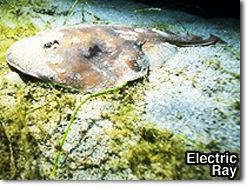
The intertidal
In the understanding of the UAE’s fish, it is important to appreciate the existence of low and high watermarks. Different species of fish feed in distinctive regions that have unique water levels. Rays prefer feeding in shallow water where they can easily catch crabs. Additionally, black-tip reef shark only appears close inshore during early and late hours of the day to feed on crustaceans and other small fish (UAE Interact 2012).
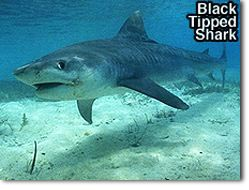
Khor Kalba
This is one of the major mangrove swamps found towards southern Fujairah. It hosts fish, which attract predators like barracuda, mangrove snappers and even sharks (UAE Interact 2012). Moreover, turtles are known to frequent the swamp to lay eggs on raised beaches. Due to the presence of crabs, both fish and birds get attracted to the swamp. For instance, the collared kingfisher is only found in a restricted region, with a large population depending on the existence of crabs as a source of food (King 2008, p. 18).
Marine mammals
According to wildlife statistics, marine mammals are fairly common in UAE’s water, including a wide range of species. The two classes of mammals discussed in this section are Cetacea, which includes whales and dolphins and the dugong. Sea lions and seals do not have living representatives in the UAE (UAE Interact, 2012). It is further believed that UAE’s water was once the home of the Indian Ocean seal that got extinct. Dolphins, whales and dugongs are found in large numbers and contribute to the global population of these mammals.
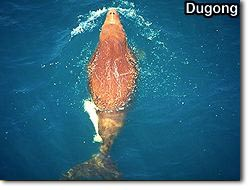
Whales and dolphins of the UAE
UAE is widely known to have almost a third of all cetaceans worldwide. Whereas some of the species are common on the shores, the presence of rare and shy species like the beaked whales is yet to be confirmed. However, their existence in neighbouring Oman justifies their presence in the UAE. Most of these species, like the sperm whale and the Risso’s dolphin, are found under deepwater canyons and cliffs on the eastern side of UAE’s coastline (Nahyan 2005). The Arabian Gulf is warm and shallow, attracting adaptive species like the finless porpoise. Dolphins and whales can easily be viewed in UAE, especially between the month of March and July, during which the sea is calm and clear. They can also be viewed during other months except for the period between December and February, due to the presence of winter winds, which create difficulties in viewing (UAE Interact 2012). Unlike other marine mammals, the presence of a whale can be recognized several kilometres away. This is because of a thunderous sound produced during movement.
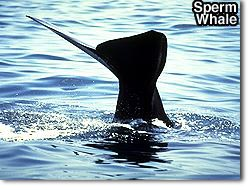
Marine Reptile
Sea turtles
It is important to note that UAE is a recognized home of four out of seven known turtles in the world today. These are the green turtle, hawksbill turtle, the loggerhead turtle and the huge leatherback turtle. Additionally, the olive ridley turtle, which is meant to be the fifth species in the country, has been sighted in neighbouring Oman. All these five species are faced with the risk of getting extinct. It has been found that the hawksbill and the green turtles feed and nest in UAE’s water and beaches (UAE Interact 2012).
On the other hand, very little information is known about the other three species since they are rarely seen, and their weight makes it difficult to frequent open sites for human viewing. The occurrence of the loggerhead turtle in UAE was recently confirmed even though nothing is recorded regarding its countrywide distribution. Similarly, records reveal that the olive ridley turtle has appeared twice in UAE, but the species is common in India and Oman, where massive nesting takes place (UAE Interact 2012).
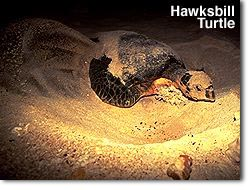
Sea Snakes
The occurrence of snakes is highly distributed across UAE, with seven species having been identified. These snakes belong to a common family, the Hydrophiidae. They are highly adaptive to sea life and are considered as excellent swimmers. Most snakes are common in warm regions of the Arabian Gulf, where they enjoy basking on sand (UAE Interact 2012). UAE snakes have several similarities, a fact that makes it difficult to differentiate most of the species. Some snakes such as the yellow sea snake are known to be huge and long, exceeding two meters.
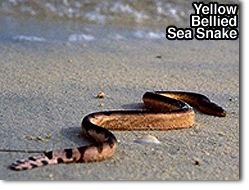
Although most sea snakes appear dull and harmless, they are the most poisonous of the world’s species. According to research, a drop of venom can kill up to five men. This is considered as one the adaptive features of sea snakes and comes into play when they are handling their prey (UAE Interact 2012).
Conclusion
From the above report, it is doubtless that UAE’s water is home to several marine animals like fish, mammals and reptiles. These animals have a great significance to UAE’s economy, especially for tourist attraction and food. It is, however, important to mention that some of the species face extinction if they are not protected from human attack.
References
George, D & John, D 2005, The Marine Environment. Web.
King, D 2008, United Arab Emirates, Marshall Cavendish, Singapore.
Marine Life of the UAE. 2012. Web.
Nahyan, H 2005, Marine Fish. Web.
UAE Interact 2012. Web.